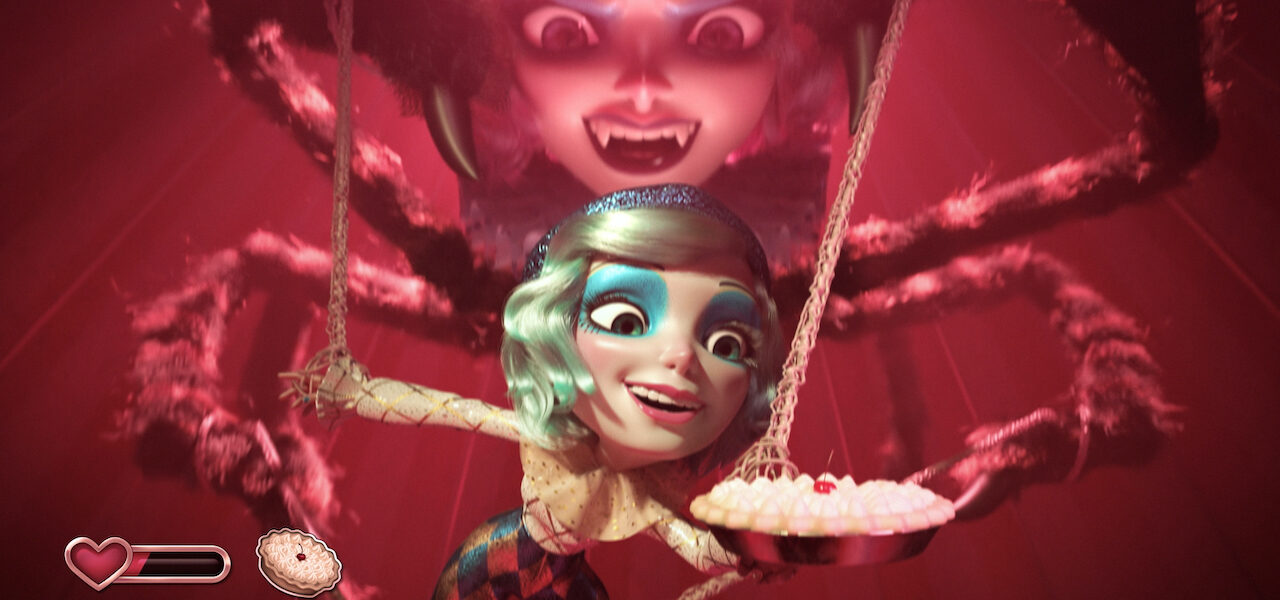
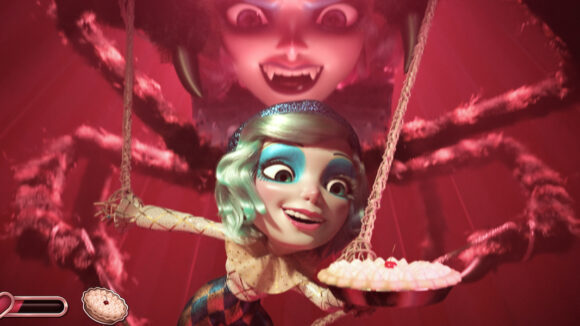
How Nathan Love Created The Animation For Katy Perry’s ‘Smile’ Video In Six Weeks (Interview)
In the video for her latest single “Smile,” Katy Perry sits down to guide a digital avatar of herself through a video game. Animated Perry goes on a whirlwind journey through a carnivalesque land, performing hair-raising circus stunts and speeding across a rainbow highway on a chicken’s back.
Perry’s wild ride is mirrored in the video’s breakneck production. New York-based cg studio Nathan Love was contacted by director Matthew Cullen and production company London Alley to produce the video’s animated component — around 90 seconds in all. The catch: they only had six weeks to do it.
A few factors gave Nathan Love the courage to sign up. Three years ago, it had pulled off a spot for Sprite on a similarly tight schedule. Not only that, the pandemic had opened up new, flexible workflows. With everyone working from home, the team was able to partner with Maine’s Little Zoo and Brazil’s Flooul with relative ease, launching a dispersed, efficient production.
In some ways, this setup points to Nathan Love’s future, says executive creative director and CEO Joe Burrascano. Below, Burrascano tells Cartoon Brew what had to be done to make this production work, and what the studio has learned from the experience…
Cartoon Brew: Had you previously produced a project of this scale on such a tight timescale? If not, how did you gauge whether you’d be able to pull this one off?
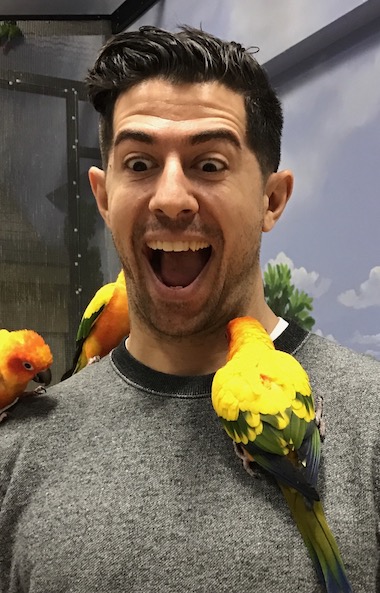
Joe Burrascano: The project I used as a reference point was a commercial we produced for Sprite a few years ago called “Thirstiest Time of the Year” featuring an animated LeBron James. Much like the “Smile” video, it featured a celebrity likeness, had a huge cast of characters (18 in total), and needed to be done in exactly the same timeframe: six weeks.
While the timeline and character count were nearly identical, the “Smile” video was three times longer and featured 14 sets versus one. Regardless, it served as a solid model of how we could successfully orchestrate and run a six-week cg production, and it gave me confidence that we were up for the challenge.
We carefully mapped out every aspect of the job, assessed how long it would take to complete each step, then calculated how many people we needed on the team and when.
Do you have a stable of people at Nathan Love ready to take projects like this on at short notice, or was it by chance that you had capacity when approached for this video?
Everyone on our team is capable of directing their own large-scale projects, but often support each other regardless of the specific role they’re playing. In this case, because so many components needed to come together so quickly, we formed like Voltron, dividing the labor based on everyone’s strengths and providing overall direction for every detail of the film. Doing so enabled this film to get the attention it needed, while still being able to balance our other projects in production.
For the hands-on production work, we had a choice to either build the team from our usual pool of freelancers or partner with other, specialized groups to divide the labor and help with the management responsibilities. Ultimately we chose the latter. It felt more efficient to hire specialists with experience running their own teams, using their own tools and pipelines to manage the workload.
We’ve had our sights set on producing longer projects for film and television for a while now, and have been viewing each new project we take on as an opportunity to test our model and improve on our capabilities. This music video was the perfect chance for us to work in new and exciting ways with people whose work we admire.
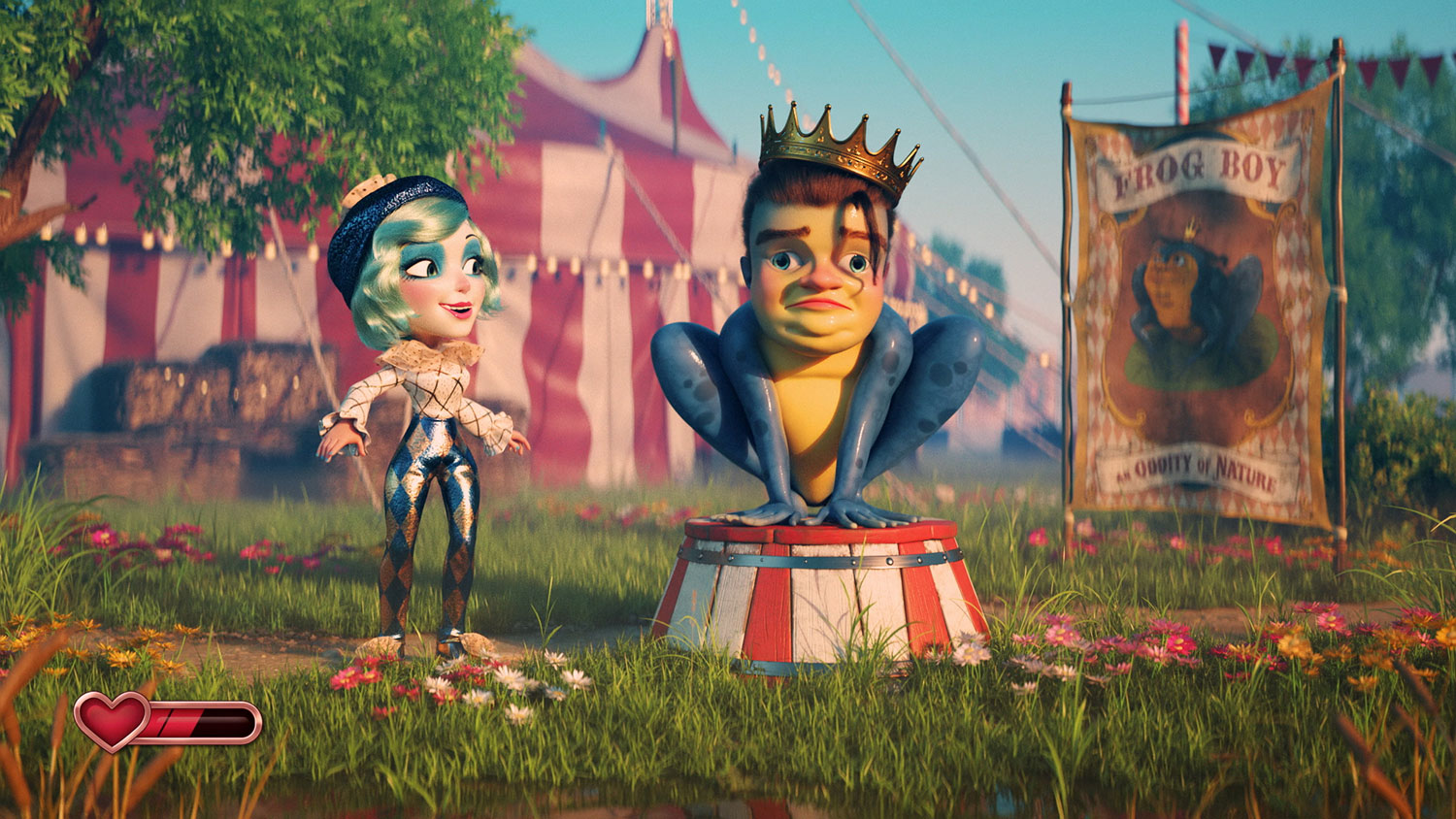
Had you worked with Flooul and Little Zoo before? How did you come to work with them on this project — what about them made them suitable?
We have been working with Flooul by proxy through Pedro Conti for over a decade, and in that time have developed a strong working relationship built on trust, professionalism, and mutual respect. Pedro is, in my mind, one of the most talented cg artists on the planet. From character creation and environments to lighting and compositing, Pedro’s work stands out. Because of that, he’s been able to attract likeminded talent from around the world and especially in his hometown of Brazil, and has recently been organizing their collective efforts through Flooul.
The relationship with Little Zoo was brand new. I connected with founder and director Jason Taylor, based on the recommendation of multiple animators and mutual friends. Jason and his studio focused on the animation portion of production. Although I’m very specific about the animators I like work with, I was interested in Little Zoo as a possible avenue for us to take on larger productions, such as tv specials and feature films, with a partner that has not only the pipeline and experience to get the job done, but the right taste for quality that aligns with our own. It was a great first collaboration, and we couldn’t have done it without them.
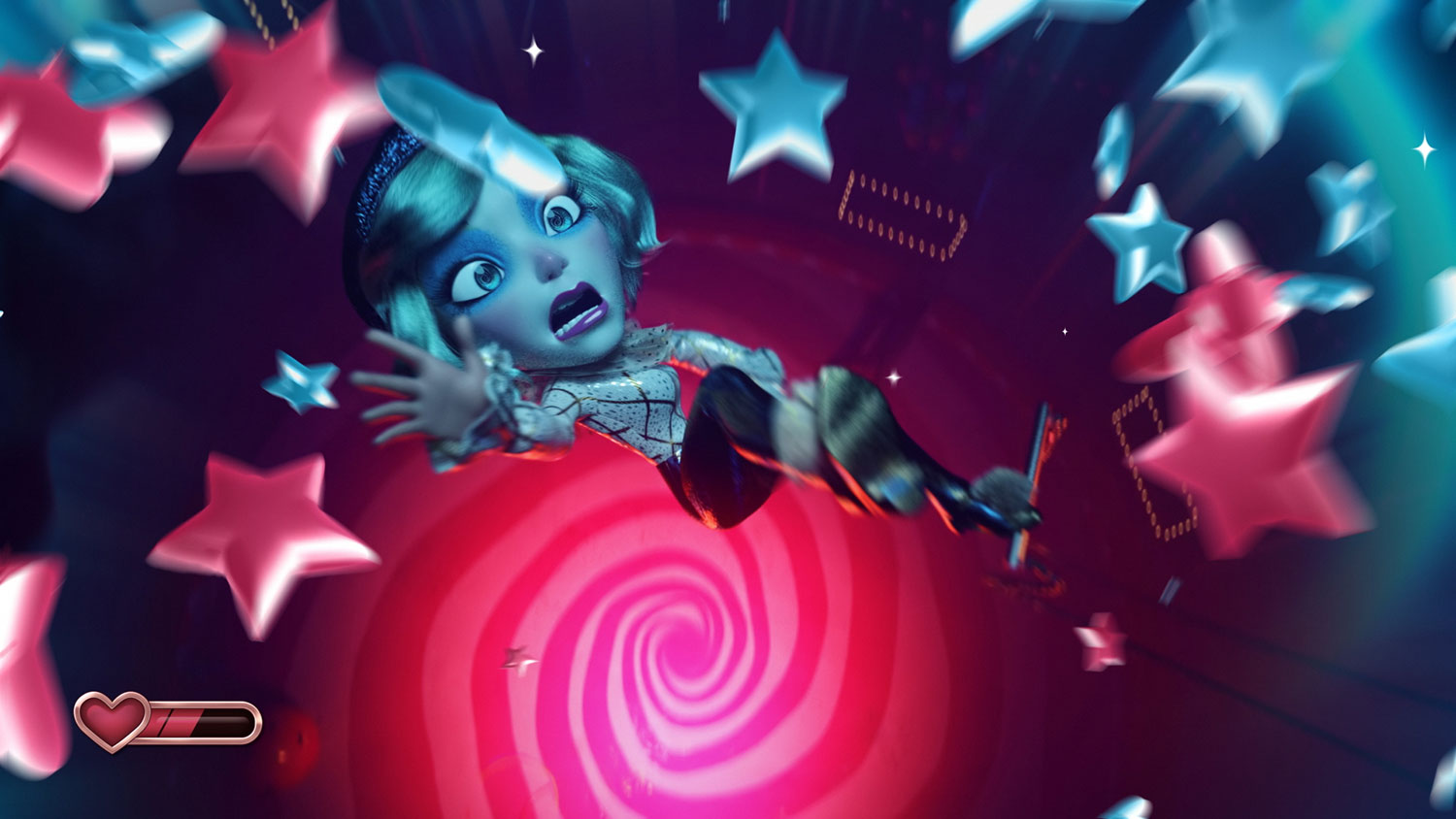
What are the benefits of collaborating remotely on a project with such a tight timescale? Are there any drawbacks?
For me, the benefit was being able to put in long hours while working from the comfort of my own home. I was never “stuck in the office” not seeing my family and the stresses that come along with that. Being remote also meant I could work with anyone in the world. At a point I was up early coordinating with team members in France, then shifting attention to my teams in New York and Brazil, and finally touching base with the director in L.A.
In a lot of ways, it reminded me of how I first started Nathan Love — sitting at a computer in my living room, communicating with everyone over email, phone, and chats — although now the technology, tools, and workflows are much better.
While you do lose some ability for spontaneous interactions and idea creation by not being around your team in the same room, it does force you to be better disciplined about your ideas, and how you communicate remotely for those same moments to happen. And in some ways, being remote on a large production has probably protected me by having fewer daily interactions and distractions.
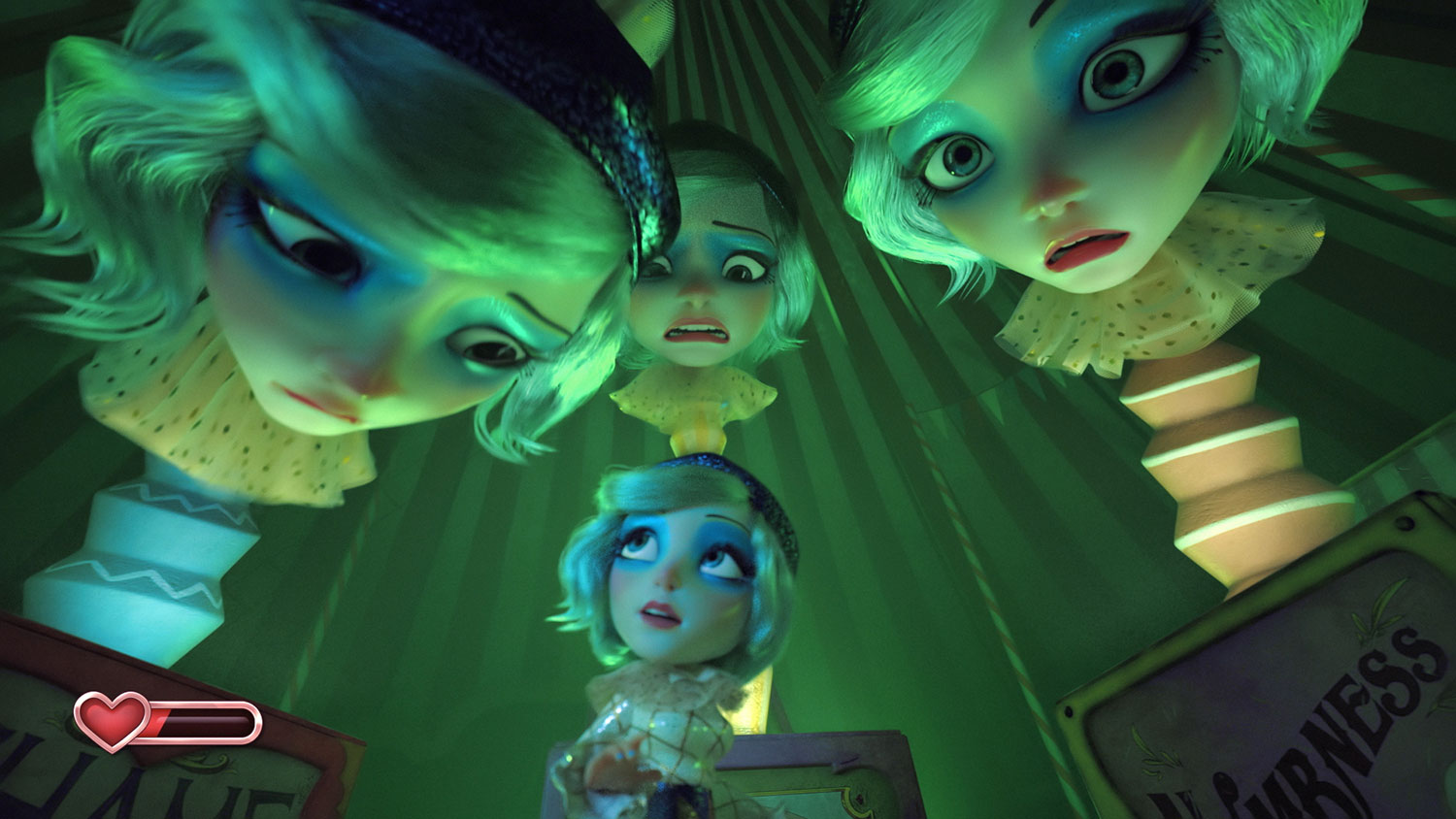
How has the pandemic changed the setup at Nathan Love? Did it prepare you in any way to take on this project, or on the contrary, did it present obstacles?
The pandemic has absolutely changed the setup of our studio, and simultaneously helped us to work in new and exciting ways. We got a taste of remote production early in the pandemic, when we shut the studio in the middle of production on a 4k movie logo intro for Nickelodeon. While we hit a few bumps in the beginning, the transition was surprisingly smooth, and we took what we learned and rolled it into the next big 3d production, which was a huge success.
These experiences, along with the conversations we were already having with remote partners Flooul and Little Zoo, combined to create the perfect storm of preparedness to take on this wildly ambitious production.
At this point our plan is to continue working remote indefinitely. The lease on our studio space in Manhattan is up at the end of the year, and we don’t plan to renew it. We’re considering smaller spaces to give our team the option and ability to work outside the house and see each other at a central location. But no matter what, we are actively investing in new technology and building our “studio in the cloud,” transferring all of our files and tools, including software and even hardware.
Head to Nathan Love’s Instagram account for a wealth of behind-the-scenes materials from the production.
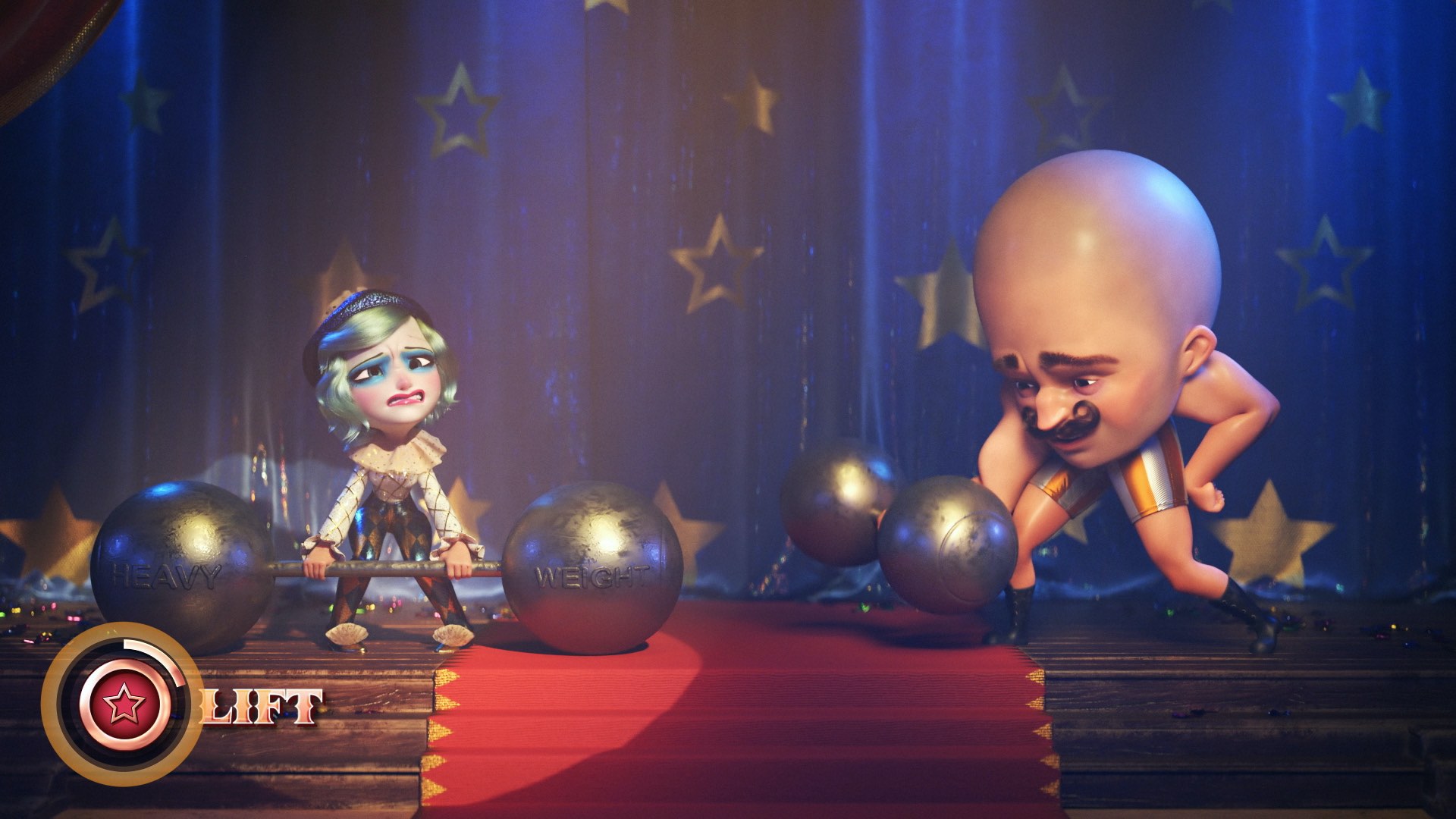

.png)